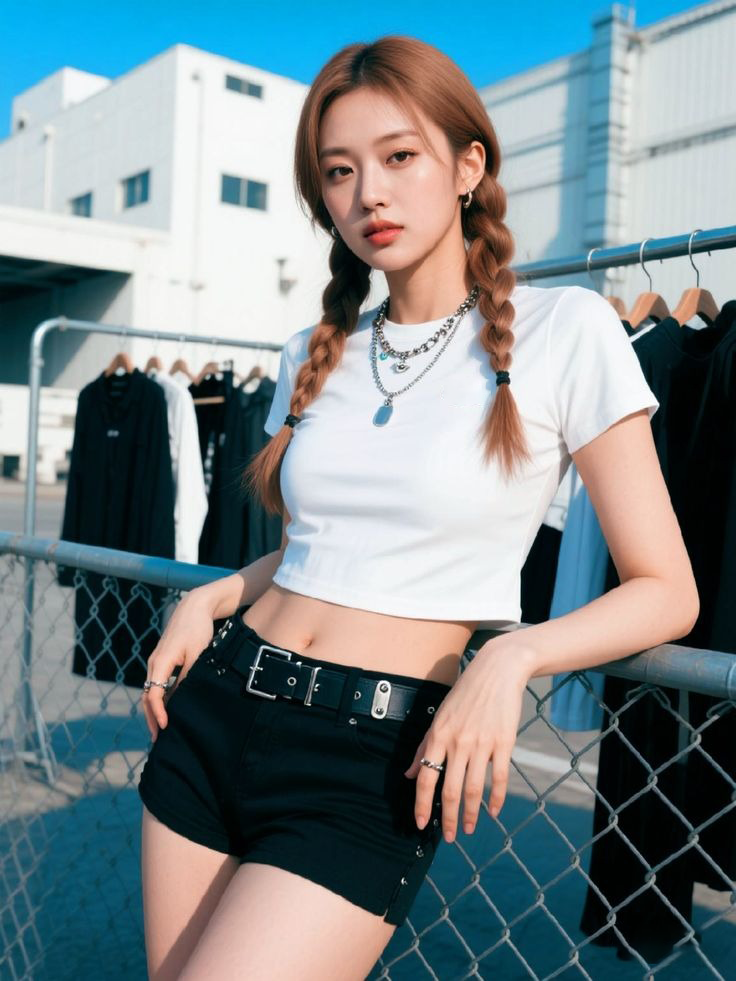Fashion is often understood as the act of dressing, a way to cover the body and present oneself in society. Yet at its highest level, fashion transcends functionality and becomes a form of art. Like painting, music, or literature, fashion reflects imagination, emotion, and vision. Designers are not merely tailors who stitch fabrics together; they are creators who use clothing as their canvas, colors as their palette, and the human body as their medium. By examining fashion as an expression of art and creativity, one can uncover its role in shaping culture, challenging conventions, and expanding the boundaries of human imagination.
The artistic quality of fashion lies in its ability to transform ordinary materials into extraordinary experiences. A piece of fabric, when cut, sewn, and draped with skill and vision, becomes more than a garment—it becomes a statement. Haute couture epitomizes this process, where master artisans dedicate countless hours to creating garments that are closer to sculptures than clothes. Intricate embroidery, innovative silhouettes, and daring concepts turn clothing into moving works of art. These garments may never be worn in daily life, but they inspire, provoke thought, and push the limits of what fashion can be. In this way, fashion reveals itself as a creative discipline equal to any other art form.
Fashion shows demonstrate this artistic dimension vividly. Runways are not just commercial platforms to present new collections but theatrical stages where designers tell stories. Lighting, music, choreography, and set design all come together to create immersive experiences that blur the line between fashion and performance art. A collection might narrate a designer’s childhood memories, explore themes of identity and politics, or pay tribute to cultural heritage. In these moments, clothing becomes more than fabric—it becomes narrative, symbolism, and metaphor, engaging audiences on both aesthetic and intellectual levels.
Fashion’s artistry is also rooted in craftsmanship. The skills required to create garments—pattern-making, draping, stitching, and finishing—demand a level of precision that borders on mastery. Like sculptors or painters, fashion artisans dedicate years to perfecting techniques that allow them to bring designers’ visions to life. Traditional crafts such as hand-weaving, dyeing, and embroidery represent artistic traditions that are passed down through generations. By incorporating these techniques into modern designs, fashion preserves cultural artistry while simultaneously reinventing it for contemporary audiences. This fusion of tradition and innovation exemplifies fashion’s dual role as both guardian of heritage and pioneer of new ideas.
Creativity in fashion is not confined to luxury houses and couture ateliers. Street fashion, independent designers, and everyday individuals contribute equally to the artistic landscape. The creativity of streetwear, for example, lies in its ability to transform utilitarian garments into cultural icons. Sneakers, hoodies, and graphic T-shirts become blank canvases for self-expression, political messages, and artistic collaborations. Independent designers often use limited resources to produce bold, experimental designs that challenge mainstream aesthetics. These grassroots expressions reveal that fashion’s artistic power is not confined to elite circles but is accessible to anyone with imagination and vision.
Fashion’s connection to other art forms reinforces its identity as a creative discipline. Painters have long inspired designers, leading to garments that echo brushstrokes, color palettes, and artistic movements. Musicians and fashion are inseparable, with styles often defining the visual identity of entire musical genres, from jazz’s elegance to rock’s rebellion to hip-hop’s boldness. Architecture influences fashion through its focus on structure, geometry, and space, inspiring designers to create garments that echo buildings and landscapes. These cross-disciplinary influences highlight fashion as part of the larger creative dialogue that connects all forms of art.
At the heart of fashion’s artistic essence is its power to provoke thought and challenge conventions. Avant-garde designers deliberately break rules, rejecting conventional notions of beauty to create garments that are strange, unsettling, or even impractical. These creations spark debates about what fashion is and what it should be, much like provocative works of contemporary art. They invite audiences to question norms about gender, body image, and identity, using clothing as a medium of resistance and reflection. In this sense, fashion does not only decorate the body—it expands the mind, forcing society to confront uncomfortable truths and imagine new possibilities.
Fashion photography further demonstrates the artistry of fashion. Photographers capture garments not just as products but as stories, framing them within contexts that evoke emotion and meaning. A fashion editorial might resemble a surreal painting, a cinematic narrative, or a poetic tableau, turning clothing into visual storytelling. These images live beyond the garments themselves, immortalizing fashion as art that resonates across generations. In magazines, galleries, and digital spaces, fashion photography affirms the role of fashion as an essential contributor to the visual arts.
Fashion’s artistic influence extends into everyday life. While couture gowns may remain on runways, their creativity trickles down into ready-to-wear collections and even casual clothing. A detail seen in high fashion—an exaggerated sleeve, an unusual texture, a daring cut—often inspires trends that shape mainstream wardrobes. In this way, the artistry of fashion filters into daily routines, enriching lives with beauty, creativity, and self-expression. Every time an individual chooses an outfit with attention to style, they are engaging in a small act of creativity, transforming themselves into participants in the artistic dialogue of fashion.
The future of fashion as art promises even greater creativity. Digital technologies such as 3D printing, augmented reality, and virtual fashion open new frontiers for experimentation. Designers can now create garments that defy physical limitations, producing digital pieces that exist only in virtual spaces. These innovations expand the canvas of fashion, allowing for creativity unbound by fabric, gravity, or cost. As humanity increasingly occupies both physical and digital worlds, fashion’s artistry will evolve into dimensions previously unimaginable, confirming its place at the cutting edge of creativity.
Ultimately, fashion as art and creativity is about more than garments. It is about vision, imagination, and the human drive to create beauty and meaning. It is about designers transforming ideas into tangible form, artisans turning materials into masterpieces, and individuals expressing identity through style. Fashion, when understood as art, affirms the capacity of humanity to turn even the most practical necessity into an avenue of creativity.
Fashion is not merely worn; it is experienced. It is a living art form that moves with the body, adapts to time, and evolves with society. It combines aesthetics with storytelling, craftsmanship with imagination, and individuality with universality. By embracing fashion as an expression of art and creativity, one recognizes its role as a profound cultural force that enriches human life and reflects the boundless potential of the creative spirit.

